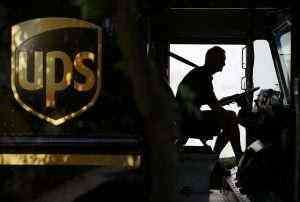
If, for example, XYZ company expected to produce 400 widgets in a period but ended up producing 500 widgets, the cost of materials would be higher due to the total quantity produced. It helps calculate the expenses incurred when a company takes on contractual work. Opportunity costs include the expenses you incur while choosing one production option over the other. For instance, a company with a limited production capacity needs to choose the production of toy cars over toy frogs, considering the higher profit involved in it. Under single costing, the cost per unit of output or production is ascertained.
- In the current environment of business, a business administration must act and take decisions in a fast and accurate manner.
- This formula helps in deriving the total costs incurred in production.
- There is the cost of the input, such as the cost of labor and materials.
- Higher-skilled accountants and auditors are likely to charge more for their services.
- Instead, most companies save time and money by automating their finances through online, cloud accounting software.
This analysis provides very useful information for decision-making in the management of a company. In the current environment of business, a business administration must act and take decisions in a fast and accurate manner. As a result, the importance of cost-volume-profit is still increasing free bookkeeping courses as time passes. A company can use the resulting activity cost data to determine where to focus its operational improvements. For example, a job-based manufacturer may find that a high percentage of its workers are spending their time trying to figure out a hastily written customer order.
Material Price Variance
By analyzing it, the manager can know which added costs are avoidable and how to avoid them. Controllable costs are costs that a manager has virtually total power to regulate. Some of these costs are not necessarily avoidable though, and the level of commitment to them can decide the success of the business. Examples include advertising costs, employee bonuses, and office supplies. Any earnings or dividends that haven’t been distributed and that are not yet received from the equity investment aren’t recorded.

Cost accounting is helpful because it can identify where a company is spending its money, how much it earns, and where money is being wasted or lost. Financial accounting is governed by regulators and must comply with the generally accepted accounting principles (GAAP) or International Financial Reporting Standards (IFRS). Cost accounting, however, doesn’t have to abide by these regulations since it’s used internally.
Departmental Costing
So, lean accounting makes management decisions based on total value stream profits, rather than cost allocation. This method not only increases profits and generates less waste, but also encourages a lean company culture that promotes teamwork and communication. Standard cost accounting is a traditional method for analyzing business costs.
- Value streams are a set of actions that contribute to fulfilling a customer’s demand, from the initial request to the customer’s appraisal of the product or service.
- Direct cost drivers like raw materials are quite easy to allocate to products, but it is more difficult to accurately identify how each activity contributes to indirect costs.
- All activities involved in production are divided based on their individual costs.
- Standard costing assigns « standard » costs, rather than actual costs, to its cost of goods sold (COGS) and inventory.
The formula for the cost to cost method is to divide all costs recorded to date on a project or job by the total estimated amount of costs that will be incurred for that project or job. The result is an overall percentage of completion that is then used for billing and revenue recognition purposes. Batch costing involves a production process where the company keeps producing the goods in batches, irrespective of order or demand.
Activity-Based Cost Accounting
When a product passes through different stages, each of which is distinct, well-defined, and easily separable, process costing can be applied. Process costing helps to calculate the cost of production at each stage. When orders or jobs are arranged into different batches, after taking into account the convenience of producing items, it is known as batch costing. In job costing, the costing of each job undertaken and executed is calculated. This method is adapted in production units that do not involve highly repetitive work. The commodities available for sale are deducted from the total period sales.
It helps analyse the overall cost and improves the company’s cost control and efficiency. This formula helps in deriving the total costs incurred in production. Companies that conduct large-scale https://online-accounting.net/ production use this method to calculate per unit costs involved in a production. One of the core aspects of U.S. generally accepted accounting principles (GAAP) is consistency.
What Are the Types of Costs in Cost Accounting?
Now, although standard costs are assigned to these products and services, the business will still have to pay the actual direct costs of material and labor. So, they will need to calculate the difference between the standard cost and the direct cost, to figure out whether or not they’ve been spending the planned amount. Now, cost accounting can contribute to the preparation of financial statements for financial accounting. The expenses, costs, and other information gathered through cost accounting make it easier for the generation of financial statements.
IRS Regulates Sales or Exchanges of Digital Assets, Cryptocurrency – The National Law Review
IRS Regulates Sales or Exchanges of Digital Assets, Cryptocurrency.
Posted: Tue, 05 Sep 2023 20:00:56 GMT [source]
These variances or differences are analyzed in terms of their causes later on. A core weakness of continuous costing is that it does not provide a standard that can be used to evaluate the efficiency of the current operations. Nevertheless, since continuous costing makes costing data available promptly, it enables the management to take corrective actions.
Ask Any Financial Question
It helps in preparing a company budget in advance for streamlined financial management. Companies may be moved to adopt ABC by a need to improve costing accuracy, that is, understand better the true costs and profitability of individual products, services, or initiatives. ABC gets closer to true costs in these areas by turning many costs that standard cost accounting views as indirect costs essentially into direct costs. A costing methodology known as « activity-based costing » is a method of comparing costs based on the cost of goods and services. It links a manufacturer’s resources and activity to its goods and/or services as it pertains to cost consumption.
Cost accounting methods can be used to refer to the various methods and processes used by companies for the analysis and presentation of costs. Companies differ in their setups, modes of production, profit targets, and duration of targets. Since cost accounting is not constrained by rules, they are encouraged to use the best possible method to determine actual costs of production. The break-even point—which is the production level where total revenue for a product equals total expense—is calculated as the total fixed costs of a company divided by its contribution margin.